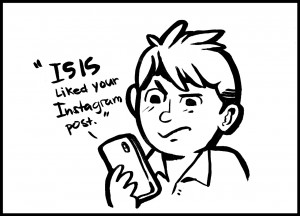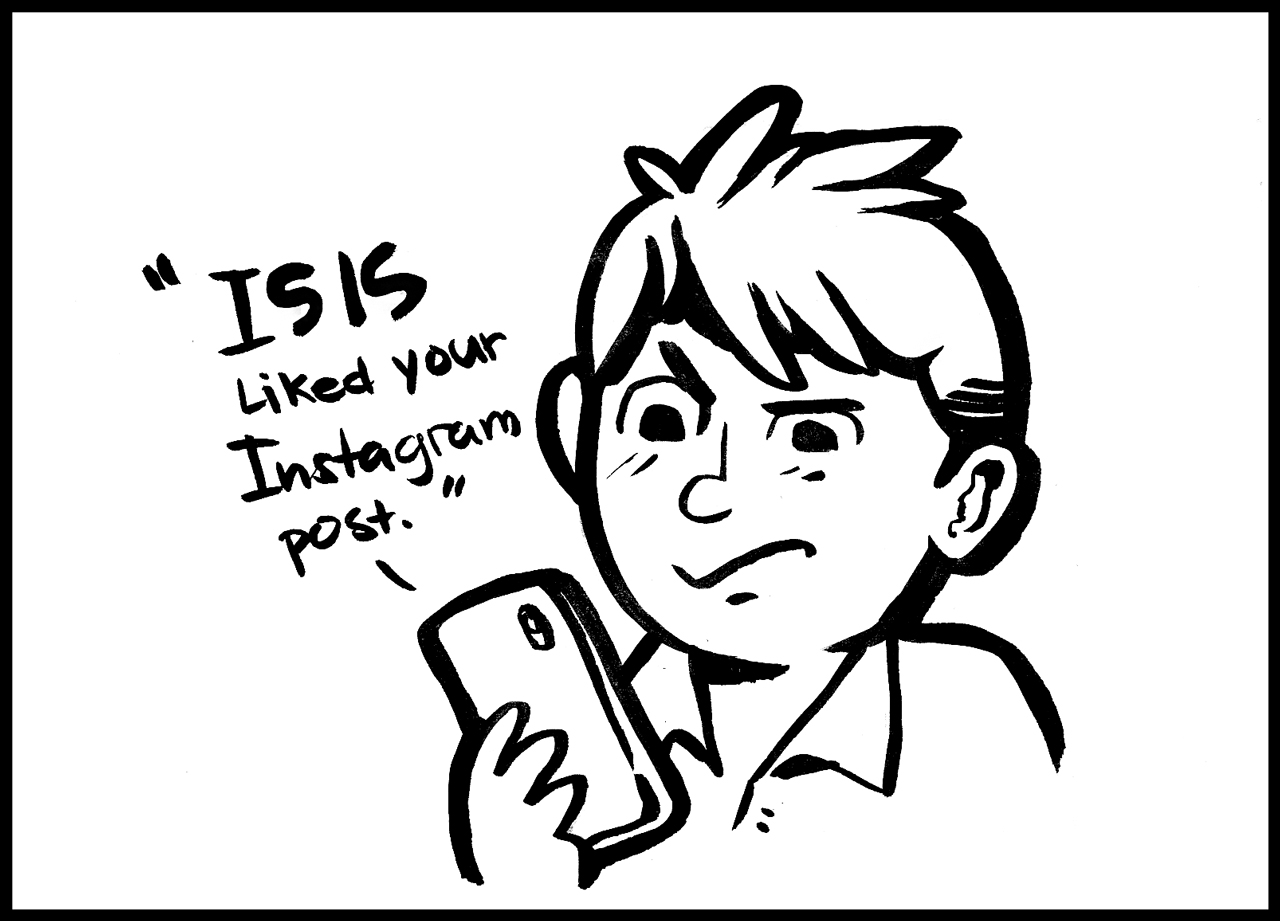EDITORIAL: ISIS and the impact of social media

Social media has given us the ability to instantly connect with the world with just a few clicks. Being connected to social networks has opened up a new way of connecting to different kinds of people, even people who are dangerous. A concept known as “socializing terror” has given terrorists the ability to directly come into contact with their target audience and either spread terror or recruit. The same social media networks, such as YouTube, Twitter and Facebook, which help users show their concern and compassion, also provide the same access and networking opportunities to wage war and spread terrorist propaganda.
For example, the use of social media during crisis, like the recent Paris attacks that occurred Nov. 13, has given us a first-hand account and an opportunity to show our support to those affected. With the recent attacks, we immediately communicated our empathy and condolences to Paris. The hashtag, #prayforparis, has been trending in Facebook, Instagram and Twitter, and by using it we can express our commiseration. Facebook also gave users the ability to overlay the flag of Paris within their profile picture. In addition, Facebook activated its Safety Check feature for Paris in order to let users know if their loved ones are safe. The positive messages and constant support that Paris received was tremendous; it brought people from different parts of the world closer.
However, the Islamic State of Iraq and Syria, known as ISIS, is using the same social media techniques to instill fear into potential victims and, at the same time, attract sympathizers into believing in their mission. ISIS has been especially successful in luring the young and disillusioned. ISIS has connected to its audience using Facebook, YouTube and Twitter platforms, which provides a very personal level of communication.
The social media tactics used by ISIS have been unprecedented. At least 200 Americans have traveled to Syria in response to their online terrorist messages. ISIS has been using the ability to create social media profiles to voice their mission, communicate with one another to execute their terror attacks, lure the disenfranchised into committing treason, and prompt potential victims to fear what they will do next. At least 46,000 Twitter accounts broadcast their hateful messages to the public. They use YouTube to display violent videos and images, which depict beheadings and attacks on innocent individuals. ISIS has made it clear to the world who their enemies are and what the threats will be in the future. Using these platforms, ISIS has literally spread their message of constant terror to the world without the intervention of gatekeepers.
In retaliation against ISIS’ socialized terrorism, an unknown group of online hackers has emerged. A group called Anonymous has responded by hacking into ISIS’ accounts and closing down as many as they can. The strategic techniques practiced by Anonymous involves a lot of research, monitoring everything ISIS has done online, and getting into active accounts to close them down. They are literally shutting down ISIS’ ability to stay in contact with the public. YouTube and Twitter have also become more proactive in removing ISIS accounts by deleting their tweets, videos and images.
As avid users in the social media world, we have to be aware of what is posted online. We have to be more cautious of what is spreading and what kind of messages we come across. We must be vigilant of the kinds of propaganda ISIS is spreading. Adolf Hitler used similar tactics to lead hundreds of people into believing in his mission and power. With persuasive and incessant messages, controlling the media, and demonizing his enemies, Hitler was unreservedly successful in undermining his followers into believing in him and Hitler did not have the Internet.
Now, social media can instantly spread these kinds of propaganda techniques with a push of a button. If we come across ISIS recruiting messages or disturbing videos or images that demonstrate violent or deadly attacks, we can report them to the proper Facebook, Twitter, or YouTube gatekeepers. We can petition these social media platforms to do more, increase online security, automatically prohibit explicit images or videos, and vigorously monitor suspicious activity. By denying ISIS these social media platforms, we can help shut down ISIS’ power of communication.
OTHER LINKS OF INTEREST
Syrian refugees: Comprehending the facts
Written by: Zachery Sang
Prior to and since the terrorist attack in Paris, France, Nov. 13, widespread caution and concern about terrorist groups hiding sleeper agents, potentially in the Syrian Refugee Program, is growing. READ MORE
Campus views on Paris, Syria and ISIS
Written by: Berenice Webster
The attacks on Paris and the Syrian refugees situation are hot topics around the world. READ MORE
INTERACTIVE GRAPHIC: Terrorist attacks in Paris
Written by: Alyx Haraway
This interactive timeline provides informative links on the recent terrorist attacks in Paris. VIEW GRAPHIC

